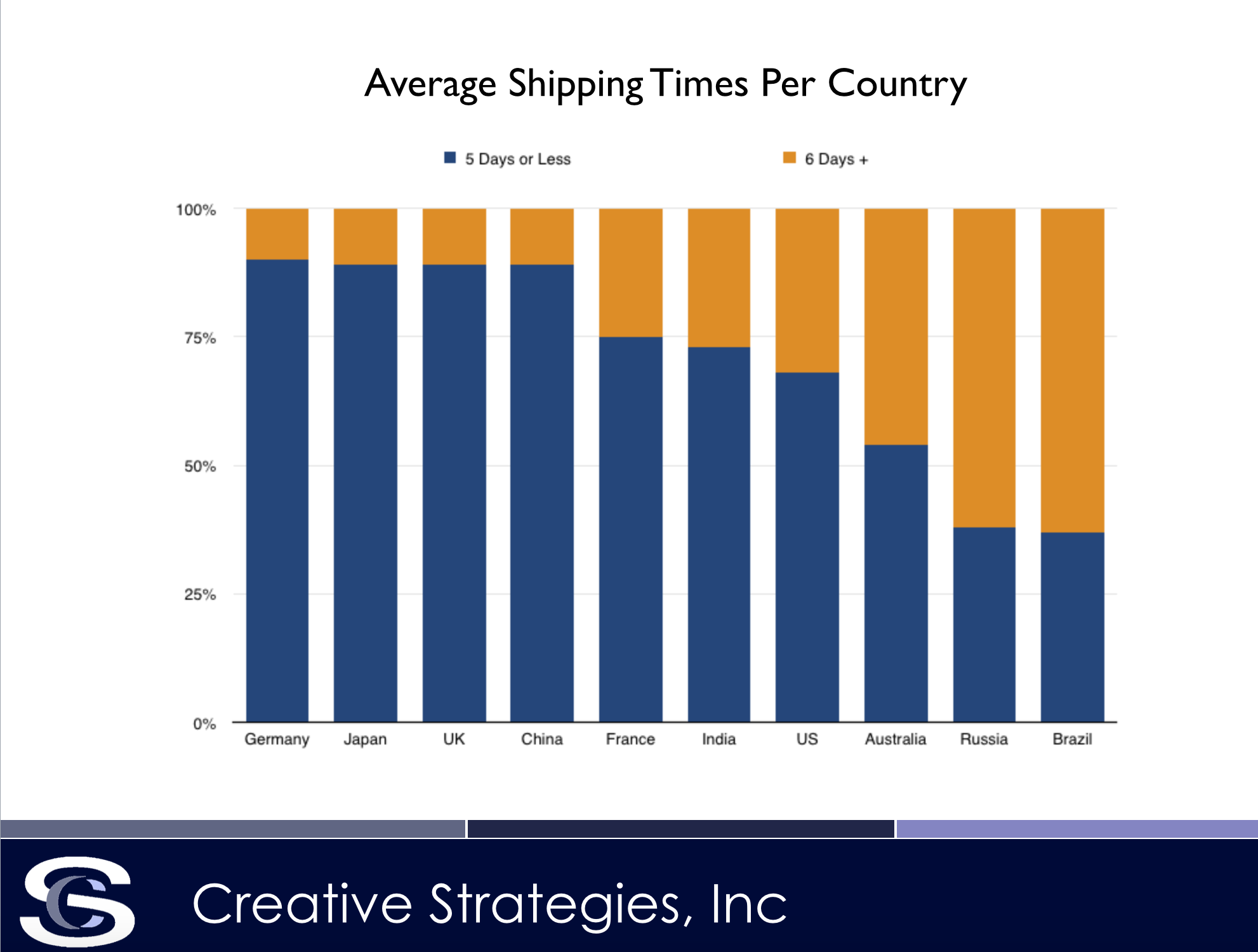E-commerce has been on my mind a lot lately. It is one of the cornerstones of the market I study because I believe it has such large and transformative potential. I’m also an advocate of transaction-based business models because I believe they are much more sustainable than free-with-ads business models. Some new data has come in I find insightful on how to fuel e-commerce transactions and get us to the inflection point of 20-30% of all retail transactions being digital. The key? Free shipping.
This may sound obvious, but if we understand this point as the primary driver to ignite more e-commerce than occurs today, it gives us clarity into the broader opportunity. First, some data.
I apologize the chart is so small. You can click on it to view it full size.
As you can see, free shipping is the number one offering by a long shot to increase the motivation to make an online purchase. While same day shipping ranks high, free is the catalyst. Now, this is a global chart percentage-wise. When I slice this data by region there are some interesting differences I need to point out.
First, in developed markets where retail channels are well established and easily accessible, the “click and collect” statistics rise to nearly 40%. Similarly, the ability to exchange or return in-store increases dramatically in these markets as well. It highlights the omni-channel trend most who study e-commerce champion. This is an advantage of retailers in developed markets and one that will likely challenge Amazon over time as retailers get more savvy in using technology to their advantage.
In other regions, specifically China, India, Brazil, and Russia, consumers rank same day deliver much higher as a purchase driver. In China and India, over 70% rank this as a feature which will encourage them to buy online more often. In Brazil and Russia, it is in the 60% range.
What this screams out to me is logistics. The battlefield for online commerce as a growth engine is in logistics. Here is a chart that shows average shipping times for an online purchase by region today.

The infrastructure required to successfully drive free shipping is still lacking. One would have to imagine this is something Amazon will bring to Prime members but also something only a few global providers have the capital to accomplish. This validates more of my thesis that a great many of these solutions will remain dominant in their region yet have trouble expanding out into other areas where competitors have already established logistics.
Interestingly in India, almost half of all VC money going into startups in the region have a logistics element to them. A recognition of the infrastructure opportunity associated with the inevitability of growth in global e-commerce.
Not surprising, shipping needs tend to be item specific. While we see an increase in the desire to buy fresh goods (i.e., foodstuffs and other groceries) it still ranks low globally. Metropolitan areas rank these higher but that is due to denser populations and generally more affluent consumers willing to pay more for such conveniences.
From much more in-depth discussions I’ve been having with major retailers and e-commerce players, I sense some understand what is happening and some do not, or are taking baby steps in this direction. I stand by my conviction that the prevalence of mobile wallets will be a major driver of e-commerce but my concern is some of the slower moving retailers will not move as quickly as the market.


Free shipping is a funny concept: shipping costs have to be paid anyway, whether from base price or as a separate item. I’ve spotted on Amazon Marketplace a few sellers that actually list their items twice, once w/ free shipping, and another time cheaper but with extra shipping separate. The “free shipping” version usually is quite a bit more expensive than raw goods+shipping fee, so you must be right that “free shipping” has a lot of draw.
Shipping is a transaction cost, and as the friction of time and distance gets eroded with better infrastructure and technology, it will become easier and easier to embed that cost into the product, until we no longer notice it, because it barely exists.